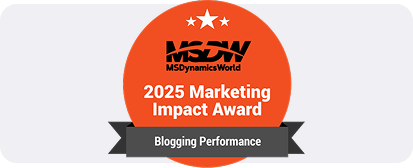Brief Overview of logistics and supply chain management in Canada | 2025
In today’s fast-moving business world, handling logistics and supply chain operations the right way is more important than ever. Whether you're dealing with raw materials, finished goods, or customer orders, every step needs to be smooth, quick, and cost-effective. That’s where good logistics and supply chain management come in.
In this article, we’ll explain what logistics and supply chain management really mean, how they work together, and why they matter for your business. We’ll also look at how tools like Microsoft Dynamics 365 Supply Chain Management and AI in logistics and supply chain are helping companies do things better.
What is Logistics and Supply Chain Management?
Supply Chain Management (SCM) is the full journey of a product—from raw materials to the customer. It covers planning, sourcing, making, and delivering the product.
Logistics Management is a part of the supply chain. It focuses on storing and moving goods efficiently. This includes warehousing, shipping, and delivering orders.
In simple terms, SCM is the big picture. Logistics is one part of that picture.
Quick Example
You own a clothing brand.
The supply chain includes buying fabric, making clothes, and selling them.
Logistics means moving those clothes from the factory to the warehouse and then to stores or customers.
Key Features and Benefits of Strong Supply Chain and Logistics
Here are some key features and benefits of good logistics and supply chain management:
Features:
Inventory tracking and control
Tracks stock in real-time so you can avoid running out or piling up too much. It helps you make smarter buying decisions.
Order processing and fulfillment
Makes sure orders are packed and shipped fast. This means fewer mistakes and faster deliveries.
Supplier and vendor management
Keeps your supplier relationships organized so you always have what you need, when you need it.
Transportation and shipping management
Finds the most cost-effective and quickest routes so goods reach the destination on time.
Warehouse management
Helps you use storage space wisely and move goods in and out without delays.
Demand forecasting
Predicts what customers might order next based on past trends, so you're always ready.
Benefits:
Faster delivery times
Customers get what they ordered quickly—which keeps them happy and loyal.
Lower operational costs
You save money by cutting waste, avoiding delays, and running operations more efficiently.
Better inventory control
You always know what’s in stock—no guessing, no overbuying.
Improved customer satisfaction
Right products, on-time delivery—customers are more likely to buy from you again.
Fewer stock outs and overstock situations
You avoid lost sales and reduce cash tied up in excess inventory.
Greater flexibility and business agility
You can quickly respond to sudden changes in demand or supply without missing a beat.
How Logistics and Supply Chain Are Different
| Point of Comparison | Logistics | Supply Chain Management |
|---|---|---|
| Focus | Transport & storage | Full product journey |
| Scope | Narrower | Broader |
| Key Activities | Shipping, warehousing | Planning, sourcing, making, delivery |
| Goal | Move goods efficiently | Manage the whole process smoothly |
Why It Matters to Your Business
No matter your industry—retail, manufacturing, or e-commerce—good logistics and supply chain management software help you:
Meet customer demand on time
Customers expect quick service. With the right setup, your products are ready when they want them.
Avoid delays or disruptions
Spot problems early and fix them before they affect your delivery timelines.
Manage stock smartly
Know what’s on your shelves, reduce waste, and make storage work for you.
Cut costs without cutting corners
Save money by working efficiently while keeping quality high.
Digital tools like ERP and AI can now help predict demand, automate tasks, and make things run more smoothly with less effort. With modern tools like ERP supply chain software and AI in logistics and supply chain, companies are gaining even more control — from real-time inventory insights to automatic demand forecasts.
Real-World Use Case
A mid-size retailer in Toronto started using Dynamics 365 Supply Chain. Before, they had order delays and stock problems. After switching to Microsoft Dynamics 365 Supply Chain Management, they cut out-of-stock issues by 30% and made order fulfillment 40% faster. This shows how the right tools can boost your business.
Logistics, Materials, and Supply Chain Management
When people say "logistics, materials, and supply chain management," they’re talking about the full path materials take inside a business. From getting raw items to sending finished goods, everything is linked:
- Materials management handles raw goods.
- Logistics moves those goods where they need to go.
- Supply chain keeps the whole process connected and running.
If one part fails, the rest of the chain suffers too.
Role of Technology in Logistics and Supply Chain
1. AI in Supply Chain and Logistics
AI helps companies plan better, manage stock, and fix problems before they grow. With AI, your system can:
- Predict sales trends
Know what will sell and stock up at the right time.
- Alert you to delays
Get early warnings so you can act fast.
- Suggest better shipping routes
Pick faster, cheaper paths for delivery.
- Adjust inventory based on real-time insights
Keep stock levels just right using live data.
2. ERP Supply Chain Tools
An ERP system like Dynamics 365 Supply Chain Management connects everything—stock, warehouses, buying, and delivery.
Benefits of Dynamics 365 for Supply Chain:
- Real-time visibility into inventory
Always know what’s in stock and where it is.
- Automated workflows for better efficiency
Cuts down on manual work and errors.
- Integrated warehouse and transportation management
Handle your full supply chain in one system.
- Easy integration with Microsoft tools (Excel, Teams, Power BI)
Work better using tools your team already knows.
- Scalable for businesses of all sizes
The system grows with you as your business grows.
Best Practices in Logistics and Supply Chain
- Keep inventory levels accurate
Regular stock checks help you avoid shortages or overstocking.
- Work with reliable suppliers
Trusted suppliers mean fewer delays and better consistency.
- Use software to track movement
Real-time tracking gives you better control over goods.
- Automate wherever possible
Save time and reduce human error by using automation.
- Plan for disruptions
Have a Plan B ready—just in case things go wrong.
- Regularly review performance metrics
Know what’s working and improve what’s not.
These steps help create a supply chain that’s strong and flexible.
Business Needs: When Do You Need Logistics and SCM Software?
You might need better systems if:
- Orders are getting delayed
Customers are waiting too long, and it’s hurting your brand.
- Inventory is hard to manage
You’re not sure how much stock you have or where it is.
- You can’t forecast demand
You’re guessing what to order or produce.
- Teams use spreadsheets and emails to track deliveries
Manual tracking is slow and leads to mistakes.
- You’re growing and need better control
Business is growing fast, but your current tools can’t keep up.
Signs You’ve Outgrown Manual Systems:
- Customer complaints are increasing
Late or wrong orders are upsetting your buyers.
- Stock levels are often inaccurate
You either run out or have too much sitting idle.
- Delivery delays are common
Your process is too messy to meet deadlines.
A modern tool like Dynamics 365 Supply Chain Management can help you fix all of that.
Dynamics Square Can Help
If you're in Canada, especially near Toronto, Dynamics Square can help you simplify your logistics and supply chain. We’re a trusted MS Dynamics 365 partner and help businesses set up and use Microsoft Dynamics 365 Supply Chain Management to fit their needs.
We provide:
- Expert advice
- Smooth setup
- Ongoing support
- Training for your team
Whether you run a small shop or a big company, we make sure everything works well.
Final Thoughts
Logistics and supply chain management are key to running a successful product-based business. Done right, they help you save money, deliver on time, and grow faster.
Thanks to tools like ERP and AI in supply chain and logistics, it’s now easier to manage everything smartly. You can track goods in real time, make better decisions, and grow without losing control.
Need help making the switch? Dynamics Square is here to guide your journey.
People Also Ask:
1. What is logistics and supply chain management?
It’s how businesses plan, move, and deliver products. Logistics handles storage and transport. Supply chain covers the whole journey from raw materials to delivery.
2. How is materials management different from logistics?
Materials management is about handling raw items. Logistics moves those items through your system—warehouse to customer.
3. Is it worth investing in logistics and supply chain tools?
Yes. They cut delays, save money, and help you grow without chaos.
4. What’s an ERP system used for in supply chain?
It links your stock, orders, shipping, and suppliers so everything runs smoothly in one place.
5. How does AI help supply chain and logistics?
AI predicts demand, finds delays early, and suggests faster, smarter delivery routes.



